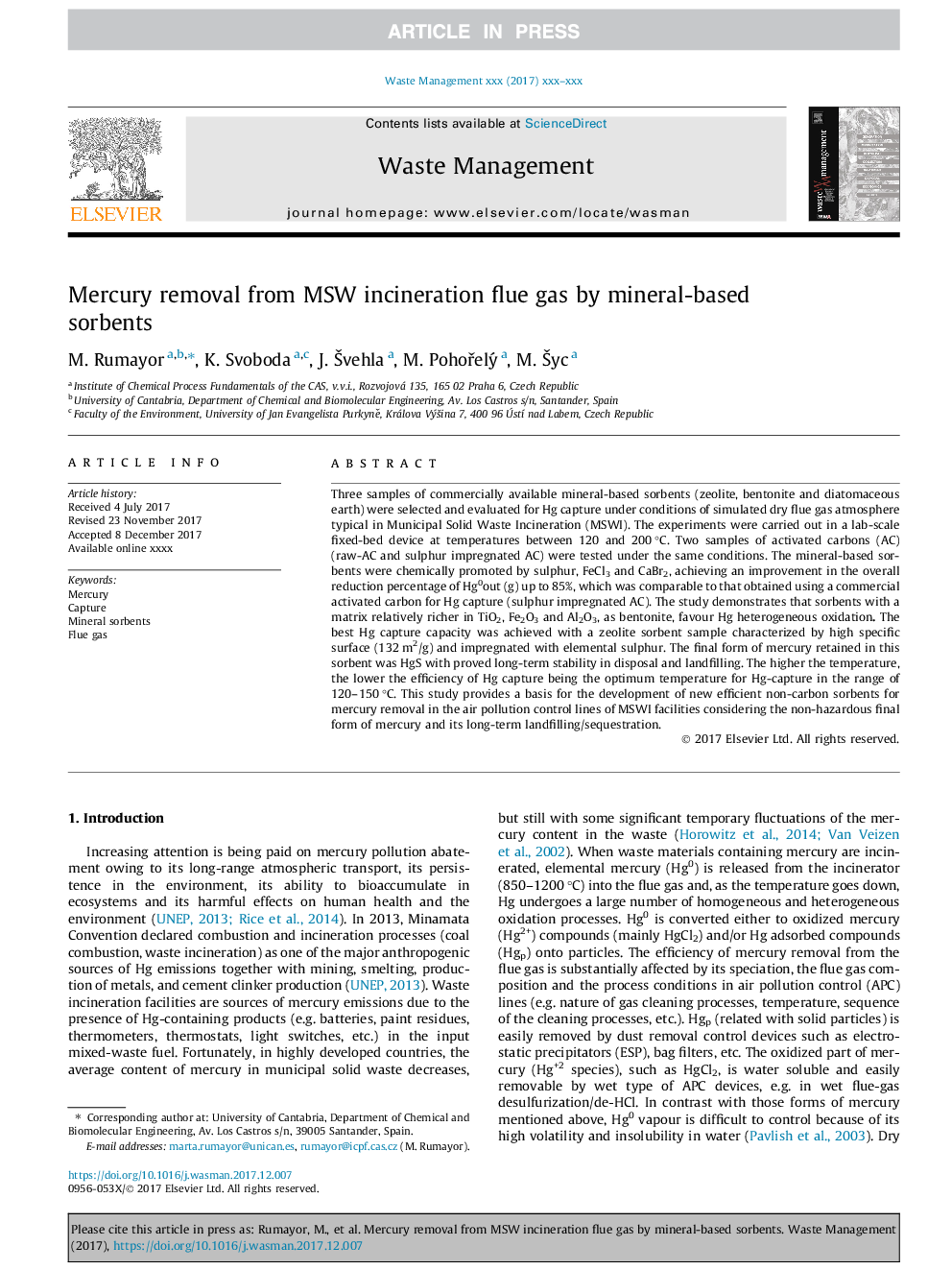| Article ID | Journal | Published Year | Pages | File Type |
|---|---|---|---|---|
| 8869946 | Waste Management | 2018 | 6 Pages |
Abstract
Three samples of commercially available mineral-based sorbents (zeolite, bentonite and diatomaceous earth) were selected and evaluated for Hg capture under conditions of simulated dry flue gas atmosphere typical in Municipal Solid Waste Incineration (MSWI). The experiments were carried out in a lab-scale fixed-bed device at temperatures between 120 and 200â¯Â°C. Two samples of activated carbons (AC) (raw-AC and sulphur impregnated AC) were tested under the same conditions. The mineral-based sorbents were chemically promoted by sulphur, FeCl3 and CaBr2, achieving an improvement in the overall reduction percentage of Hg0out (g) up to 85%, which was comparable to that obtained using a commercial activated carbon for Hg capture (sulphur impregnated AC). The study demonstrates that sorbents with a matrix relatively richer in TiO2, Fe2O3 and Al2O3, as bentonite, favour Hg heterogeneous oxidation. The best Hg capture capacity was achieved with a zeolite sorbent sample characterized by high specific surface (132â¯m2/g) and impregnated with elemental sulphur. The final form of mercury retained in this sorbent was HgS with proved long-term stability in disposal and landfilling. The higher the temperature, the lower the efficiency of Hg capture being the optimum temperature for Hg-capture in the range of 120-150â¯Â°C. This study provides a basis for the development of new efficient non-carbon sorbents for mercury removal in the air pollution control lines of MSWI facilities considering the non-hazardous final form of mercury and its long-term landfilling/sequestration.
Related Topics
Physical Sciences and Engineering
Earth and Planetary Sciences
Geotechnical Engineering and Engineering Geology
Authors
M. Rumayor, K. Svoboda, J. Å vehla, M. PohoÅelý, M. Å yc,
